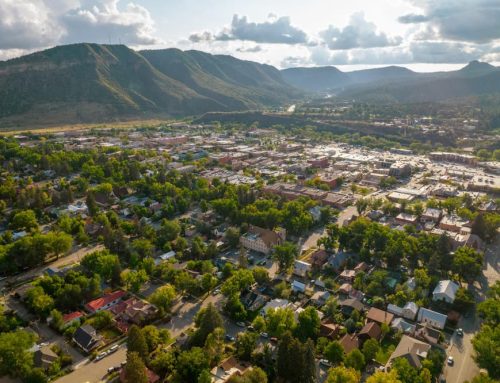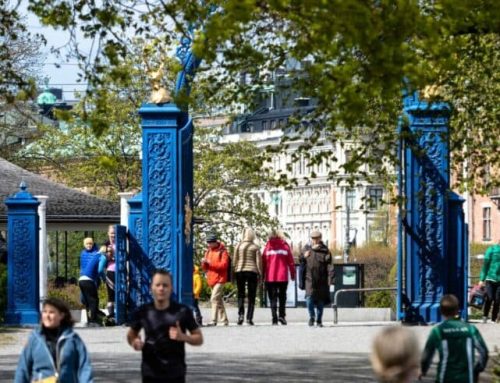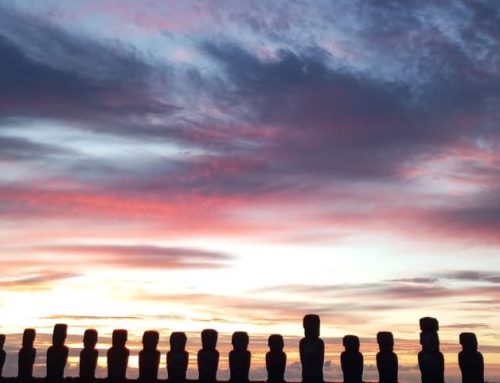Destination Stewardship Report – Autumn 2023 (Volume 4, Issue 2)
This post is from the Destination Stewardship Report (Autumn 2023, Volume 4, Issue 2), a publication that provides practical information and insights useful to anyone whose work or interests involve improving destination stewardship in a post-pandemic world.
Partnership with a Purpose: Takeaways from the Power of Partnership Summit
Last October’s Power of Partnership Summit wasn’t just an event; it was a collaborative accomplishment, dedicated to exploring the intersections among culture, climate, and community within the realm of travel and tourism. Held in Richmond, Virginia, the conference was a joint effort by the Cultural Heritage Economic Alliance, Inc., Tourism Cares, The Travel Foundation, and the U.S. Cultural & Heritage Marketing Council. The goal among the attending industry leaders, visionaries, and change-makers was to amplify multicultural experiences, leverage cultural assets, and propel accelerated climate action. Jonathan Tourtellot, CEO of the Destination Stewardship Center, and Alix Collins, Director of Marketing & Communications at the Center for Responsible Travel (CREST) share some of their takeaways.
Tourism Must Aim to Benefit All Community Members
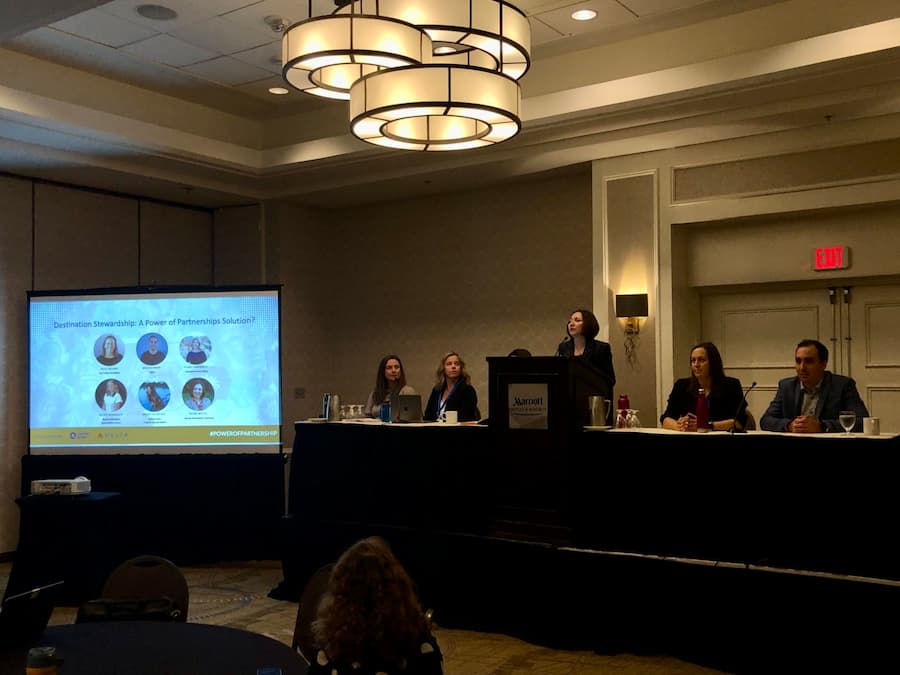
Seleni Matus leads a panel discussion on destination stewardship.
“Build it for the community first.” – Richard Peterson, U.S. Cultural & Heritage Marketing Council.
Adam Burke, CEO of LA Tourism, described their community-first approach, including adopting a new mission statement that puts the community at the forefront (“To improve the quality of life for all Angelenos through the economic and community benefits of tourism), creating community welfare initiatives (such as creating a multiblock community mural initiative), and implementing a 30-person community advisory board independent of the DMO.
Kelly Galaski, Tourism Specialist at The Travel Foundation, mentioned the need for destinations and tourism practitioners to “challenge the assumptions of the way things should be done” when it comes to destination management “because it leaves a lot of people out.”
Understanding and celebrating the whole story
“Cultural heritage tourism is understanding the story of a people.” Paula Robinson, Bronzeville Community Development Partnership
Bobbie Chee Bigbee, a PhD student, spoke of “Indigenous resurgence” and the use of “toxic tourism” as a means for highlighting the issues indigenous communities are facing. Multiple panelists also discussed the imperative of understanding the story of people in cultural heritage tourism, steering away from exploitative narratives.
While discussing a project in Taos, New Mexico, Wes Espinosa, Executive Director of CREST, observed that “destination stewardship is a tool for community empowerment.” As for the planning process, “allow for lofty notions,” he urged, but then “focus on the do-ables.”
In a DEI session, J. Dontrese Brown urged using tourism as a way to engage youth and preserve oral history: “Once the old person’s stories are gone, they’re gone forever.” Many locales have untold stories, he argued, and the name of his website makes his point: “Hidden in Plain SiteTM”
Sustainability must be inclusive, not additive
“Don’t think of sustainability as an additional burden in your job. Think of it as part of your job.”
This was a common theme throughout the week. This work we are doing, to make the travel and tourism industry more sustainable, cannot be additive. Sustainability has to be woven throughout the work, not relegated to a niche within the industry.
Additionally, we need to be holistic in our sustainability efforts – we can no longer think of climate change, cultural heritage, diversity, equity, accessibility, or inclusivity as separate issues. We must understand that they are interconnected and the best solutions are the ones that treat them as such.
Placemaking is a way to bring the community and visitors together
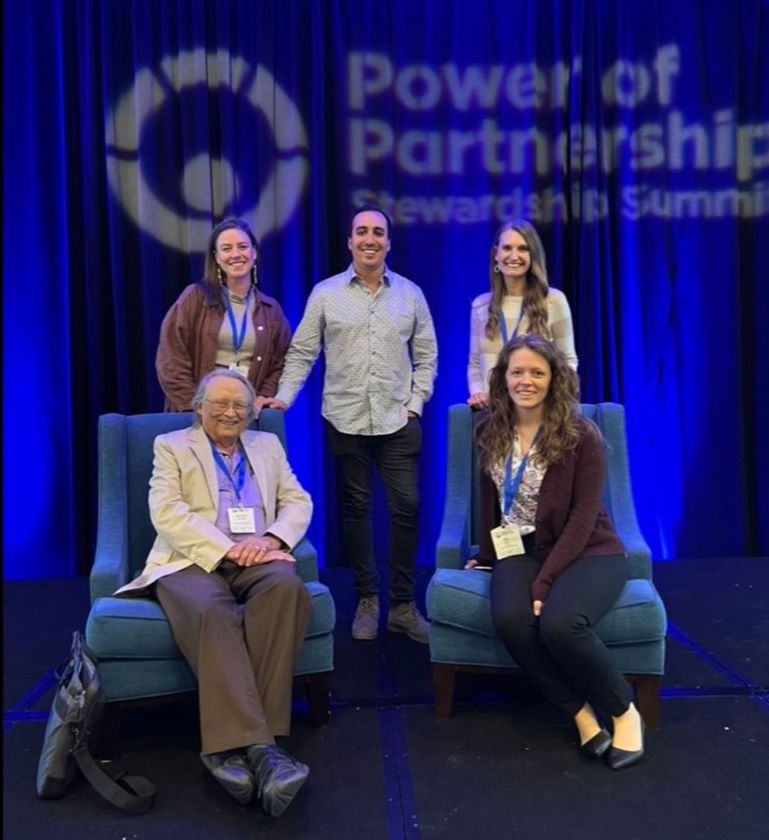
(Back left to right) Kelsey Wermager, Wesley Espinosa, Samantha Bray; (Front left to right) Jonathan Tourtellot and Alix Collins
“Placemaking is a collaborative process by which we can shape our public realm in order to maximize our shared value.” – Ethan Kent, PlacemakingX
Ethan Kent, PlacemakingX CEO, articulated a comprehensive approach to placemaking, urging collaboration and shared ownership. “Place tourism is moving beyond consuming places” to actively becoming part of and even contributing to them. He outlined five steps for successful placemaking: collaborate on community evaluation, compile short-term experiences, agree on a vision, identify spaces for placemaking, and define the place with local ownership. Success, he said, should be measured by “place capital,” encompassing economic, environmental, physical, and cultural values.
The need for different metrics
While there is some discussion in our industry that focusing on metrics is reductive, especially at a time when regenerative tourism is gaining popularity, the reality is we still need to measure success. How, then, should we be doing that? We need better metrics, especially ones that focus on the quality of life of residents, the quality of experiences for visitors, and the health and well-being of the environment and local culture.
Marco Lucero offered two sample metrics from his work at Cuidadores de Destinos in Chile that go far beyond the customary key performance indicators: The percentage of women who feel safe walking at night and the diversity of bird songs in the environment. Another speaker mentioned measuring the increase in conversations and connections happening within a community.
Conclusion
Those are just a few takeaways. Numerous stimulating sessions addressed African-American Heritage, climate and community, DEI (Fort Lauderdale slogan: “Everyone under the sun”), funding via Federal grant-giving programs, better uses for lodging taxes, and much more. Attendance even on the final day was robust, always a good sign.
About the Author
Alix Collins is the Director of Marketing & Communications at the Center for Responsible Travel (CREST). Her passion for sustainable and responsible tourism stems from her experience living with an elephant-keeping community in northern Thailand, where she lived with a host family and saw firsthand how tourism could have a positive impact not only on small, rural communities and cultures but also on their environments and wildlife.


